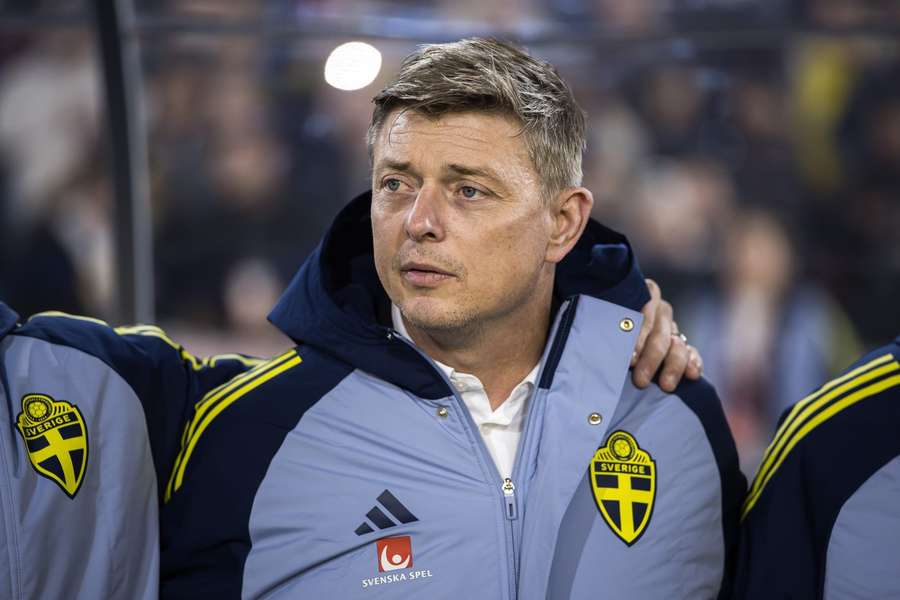At the start of last year, Sweden looked in desperate need of a change at national team level. In the space of two years, they had failed to reach the World Cup and 2024 European Championships, and a very disappointing string of results had relegated them to the third tier of the Nations League.
After more than seven years at the post, Janne Andersson resigned as Swedish national coach in November 2023.... It was time for a change.
The former Arsenal defender Kim Kallstrom arrived in the spring of 2024 as the new Director of Football at the Swedish FA with the ambition of taking Swedish football down a different road. And his first decision was to employ a non-Swedish coach for the first time in history, as Jon Dal Tomasson, who had previously made a name for himself at Malmo and Blackburn as a coach, was brought in to steady the Swedish ship.
Tomasson also took an unusual approach at his first press conference as he chose to speak English instead of Danish, which is otherwise commonly understood by most Swedes. "I'm not going to speak Swedish because I want to be understood, but most importantly, I want to be able to understand all the questions. To be honest, if I were to speak Danish, everyone wouldn't be able to understand it, and if I tried to speak Swedish – sorry, but I'm a nightmare," said Tomasson.
Sweden's national teams of the past generally applied a 4-4-2 formation, but in an attempt to kickstart a new era and improve results, the former Danish international striker launched a 3-4-1-2 set-up to shake up the Swedish system.
The first signs were extremely positive. Sweden were praised as the standout attacking team in Europe, topping all statistics in the Nations League campaign for goals, shots, chances created, and passes into the final third as Tomasson's men recorded six wins in seven matches.
At the same time, Tomasson seemed to have found the right formula for linking the rest of the team with arguably the most talented attacking duo in Europe, Alexander Isak and Viktor Gyokeres.
"I find that there are still people who are sceptical about whether we can play so offensively against better nations. We play offensively, but in no way naively. Some observers have called it a revolution. I see my task first and foremost as a turnaround from bad results by building a new style and a new team," said Tomasson to Bold.dk after the first promising campaign.
His biggest critics pointed out that the initial promising results in the Nations League had been achieved against smaller football nations like Estonia, Azerbaijan, and Slovakia, and cracks began to appear at the surface when Sweden lost 1-0 to Luxembourg in preparation for the World Cup campaign.
Isak then arrived completely out of shape for the Swedish World Cup squad at the beginning of September, and a promising 2-1 win in Slovenia turned into a disappointing 2-2 draw when goalkeeper Robin Olsen made a dreadful blunder in injury time to concede a late equaliser.
The atmosphere in the Swedish camp then deteriorated when Sweden fell victim to a shocking 2-0 defeat away against Kosovo.
Just before the next qualifier against Switzerland, Olsen then very surprisingly brought down the curtain on his international career and said that he would not return as long as Tomasson was in the coaching seat. The reason was that Tomasson allegedly had promised Olsen a starting role in the qualifying campaign and still chose to bench him against Switzerland.
Tomasson responded that he felt that Olsen failed his teammates, but it wasn't the first time that the former Feyenoord and Newcastle striker ended up in a conflict with one of his own players.
When he was in charge of Malmo FF, Behrang Safari and Rasmus Bengtsson felt poorly treated by the controversial Dane. Later in the national team, Hugo Larsson did not hide the fact that he was tired of the lack of playing time under Jon Dahl Tomasson, and the Dane has also had a minor controversy with Anthony Elanga.
On the pitch, Tomasson was booed during the presentation before the vital clash against Switzerland, and banners called for the dismissal of the "Danish Devil" after another embarrassing defeat against Kosovo, which led the Swedish media to criticize Tomasson for not utilising his substitutes, for sticking to his 3-5-2 formation, and for hiding his starting line-up against Kosovo so that his own players were left in the dark until less than two hours before kick-off.
In the end, the Swedish FA felt forced to sack the national team coach, something that had never happened before in Swedish football history.

